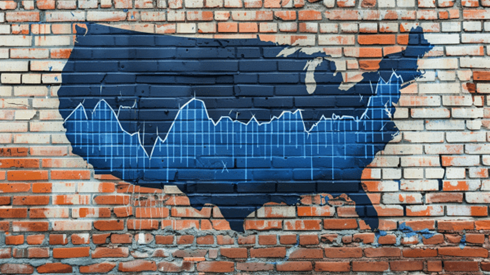What's Driving the US Captive Landscape?

Adam Miholic , Claire Richardson , Hylant Global Captive Solutions | August 23, 2023

Editor's Note: Hylant Global Captive Solutions contributes this Thought Leadership article examining trends in the US captive insurance market.
Remember the first time you saw an electric vehicle on the road? For months afterward, you stared and marveled at every one that passed by. Now, when there are more of them than ever before, you hardly notice them. Normal has replaced novelty.
There's a parallel in the American captive insurance landscape. What seemed fascinating but improbable 5 years ago is now just another feasible form of risk management. Captives have clearly entered the mainstream of risk management in the United States. The question is no longer "Should we even consider a captive?" but "Is there a way we can reduce the cost of this risk through a captive?" We're having more conversations about strategic reviews examining lines of business and how captives could improve coverage while lowering costs.
Using captives to address property and casualty risks has become a common tactic in the overall risk financing discussions with many insureds. They're a proven alternative when traditional property-casualty coverage is unavailable, overpriced, or inadequate. Captives give companies insurance capacity and access to reinsurance they likely couldn't otherwise obtain, so they can change the insurance tower. That's happening as companies in the short-term rental property market—particularly in coastal areas—are finding property-casualty coverage difficult to obtain or are paying exorbitant premiums. They might think about establishing a captive that automatically pays benefits when the wind speed or rainfall amount exceeds certain parameters.
There's clearly a momentum shift, with much of the new interest centered on life and medical benefits. As companies' understanding of risk grows and they take more active steps to manage risks, they start looking at familiar things like health insurance in an entirely new way. They can estimate how much profit was baked into their health plan's latest increase. They know their employees better than the insurer does. So why not give them a better plan that promotes their health and costs everyone less?
Employee benefit captives are a hot topic today, particularly when voluntary benefits are involved. Captives are an increasingly common choice for coverages such as medical, dental, vision, life, and disability. In the continued tight employment market, the scope and quality of benefits packages play a key role in worker attraction and retention. A captive can not only reduce the company's spend on top-quality benefits, but it can also provide employers the ability to offer enhanced packages to employees and their families. For companies with global operations, captives can help balance coverages across sites in multiple countries.
Medical stop-loss coverage continues to provide a big growth opportunity for captives. As underwriters have made it harder for companies to obtain coverage, creating a captive can help an organization prepare for and minimize the impact of catastrophic claims. Even in companies without discrete mechanisms like stop-loss coverage, captives can be structured to serve similar functions by building premium.
Another perennial source for captive activity is the category of directors and officers, errors and omissions, and similar coverages for organizations with unique or highly specialized liabilities. We've also observed a lot of captives being employed to address what we sometimes call "sleep at night" coverage. That's when a captive is used to address risks that are either commercially uninsurable or prohibitively costly. The structure can be customized to fill the gaps between the risk and the company's existing insurance coverage. That way, the board and the executive team will worry a lot less.
A continuing trend is the enthusiasm for cell captives, which is particularly prevalent among middle-market businesses that may not be comfortable sharing risks with third parties. Not only do cell captives allow organizations to take advantage of the benefits of the strategy more quickly, but they also offer cost and timing advantages. For some organizations, creating their own cell captive facilities allows them to use the revenue from renting their cells to third parties as a way to further reduce the cost of risk management.
There's been quite a bit of discussion about the roles and responsibilities of captives in regard to environmental, social, and governance (ESG) concerns. But if you think about it, a properly structured and efficient captive is actually an ESG initiative. You're force-functioning accruals for self-insured risk, you're proactively putting aside funds to protect the company or its assets or its people, and you're expanding or broadening coverages for the benefit of the company, its shareholders, or its people. By definition, that's an ESG initiative.
Finally, we've noticed another pair of promising trends as we've attended conferences for folks in the captive sphere. We're seeing substantially more attendance on the part of executive leadership, with C-suites well represented. And on the other side of the experience scale, we've enjoyed interacting with the impressive upsurge in younger and more diverse attendees. Both trends bode well for the continued expansion of captives.
Adam Miholic , Claire Richardson , Hylant Global Captive Solutions | August 23, 2023









